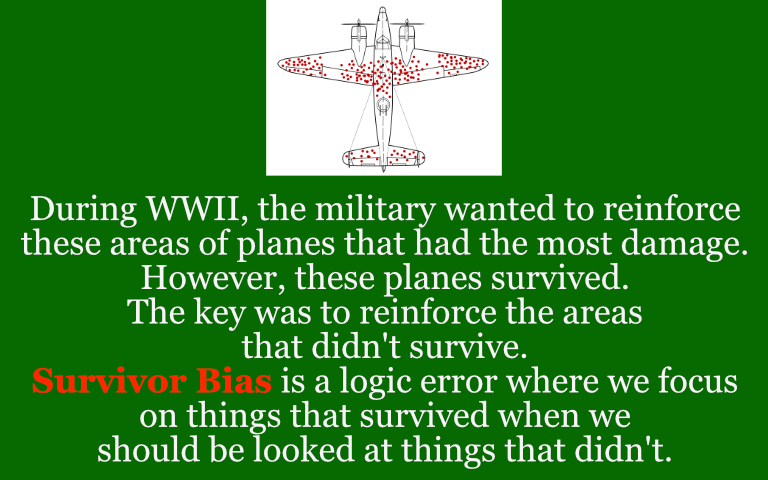
During World War II, researchers examined planes that were damaged on missions but managed to return. In essence, they counted bullet holes.
The thought was that these places that got hit needed to be strengthened and protected.
Seems to make sense.
Except these are the planes that made it back.
What happened to the ones that didn’t?
This is called survivor bias.
The planes that were damaged and made it back did so because the places with the bullet holes either weren’t vital to survival or adequately built.
It was the places that weren’t hit that needed to be looked at. Because that’s where the planes that didn’t come back had been hit.
I sometimes read a survival story of someone who claims they drank their urine. People use that to say one should do that in an extreme emergency. Except we know for certain that it is harmful to do that. Your body has already cycled that water. You’re just imbibing waste product that your body must waste more energy on recycle. But they survived, so . . .
But how many died who did this?
Survivor bias is one of the key terms in The Green Beret Guide to Great Disasters. It’s one of the things we need to understand in order to prevent future disasters.

Recent Comments